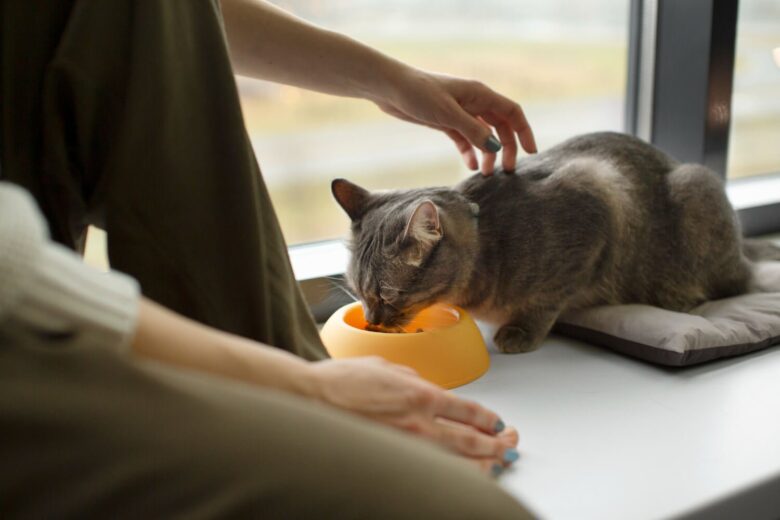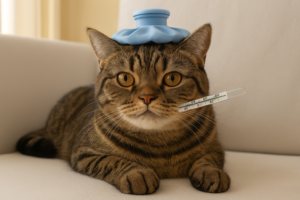Choosing the right food for a cat with food allergies can feel overwhelming, but there are several reliable and veterinarian-approved options that help reduce symptoms and support your cat’s health. Here are the most recommended diets:
- Hydrolyzed protein diets: These diets break down proteins into smaller molecules that are less likely to trigger an immune response.
- Novel protein diets: Foods that use proteins your cat has never eaten before, such as duck, venison, or rabbit, are less likely to cause reactions.
- Limited-ingredient diets: These contain only one protein and one carbohydrate source, making it easier to identify allergens.
- Homemade diets: When done under the guidance of a veterinary nutritionist, homemade meals offer full control over ingredients and preparation.
Regardless of the option you choose, consistency is crucial. Avoid switching between brands or protein sources frequently, and ensure treats and medications also follow the same restrictions.
Daily Care Tips to Support Allergic Cats
In addition to diet management, small changes in daily care can significantly improve the quality of life for your allergic cat:
-
- Keep feeding areas clean: Wash food and water bowls daily to prevent buildup of allergens or bacteria.
- Avoid table scraps: Even a small bite of something “human” can set off an allergic reaction.
- Use fragrance-free cleaning products: Strong smells or chemical cleaners can irritate sensitive skin.
- Consider omega-3 supplements: With your vet’s approval, these can reduce inflammation and improve coat health.
- Monitor regularly: Track symptoms, appetite, and energy levels to spot any changes quickly.
When to Consult a Specialist
If your cat’s symptoms persist despite a careful elimination diet and lifestyle adjustments, it’s time to consult a veterinary dermatologist or internal medicine specialist. They can perform allergy testing, recommend advanced diagnostics, or tailor a treatment plan suited to your pet’s specific needs.
In some cases, your cat may require topical treatments, antihistamines, or corticosteroids to manage flare-ups. However, these are typically used as a last resort or temporary solution during severe allergic reactions.
This video offers a concise explanation of how food allergies develop in cats and what steps you can take to identify and manage them effectively. It complements the information in this article and provides real-life insights from a vet’s perspective.
What to Avoid If Your Cat Has Food Allergies
Once a specific allergen is identified, complete avoidance is the most effective way to keep your cat healthy. Here’s a quick reference of what to eliminate from their diet:
| Food Type | Examples | Reason to Avoid |
|---|---|---|
| Common proteins | Chicken, beef, fish, lamb | Most likely sources of food allergies |
| Dairy | Milk, cheese, cream | Often causes digestive and skin reactions |
| Grains | Wheat, corn, soy | Can aggravate existing allergies or sensitivities |
| Artificial additives | Preservatives, colorings | May trigger immune responses |
| Table food | Leftovers, snacks | Often contain hidden allergens |
How to Prevent Food Allergies in the Future
There’s no guaranteed way to prevent food allergies, but a proactive approach can reduce the risk significantly:
- Rotate protein sources: Introduce new proteins slowly and alternate them over time to avoid overexposure.
- Choose high-quality diets: Opt for trusted brands with minimal fillers and artificial ingredients.
- Introduce new foods gradually: Abrupt changes can shock your cat’s system and cause allergic reactions.
- Keep a food journal: Track everything your cat eats and how they react. This is extremely helpful during vet visits.
Conclusion: Managing a Cat with Food Allergies Is a Journey, Not a One-Time Fix
Living with a cat with food allergies may feel overwhelming at first, but with patience, knowledge, and the right care, your cat can live a comfortable and symptom-free life. Paying attention to early signs, making thoughtful dietary choices, and staying consistent with routines will go a long way in maintaining your feline’s health.
Work closely with your veterinarian throughout the process and don’t be discouraged if results take time. Each cat is unique, and what works for one may not work for another. Keep observing, adjusting, and above all—stay committed to your cat’s well-being.
👉 Related Reading: How to Groom Your Cat Yourself
Liked this guide? Share it with other pet owners and explore more of our articles about feline health, safe feeding, and natural pet care. Your journey with your cat deserves support, and we’re here to help every step of the way.



